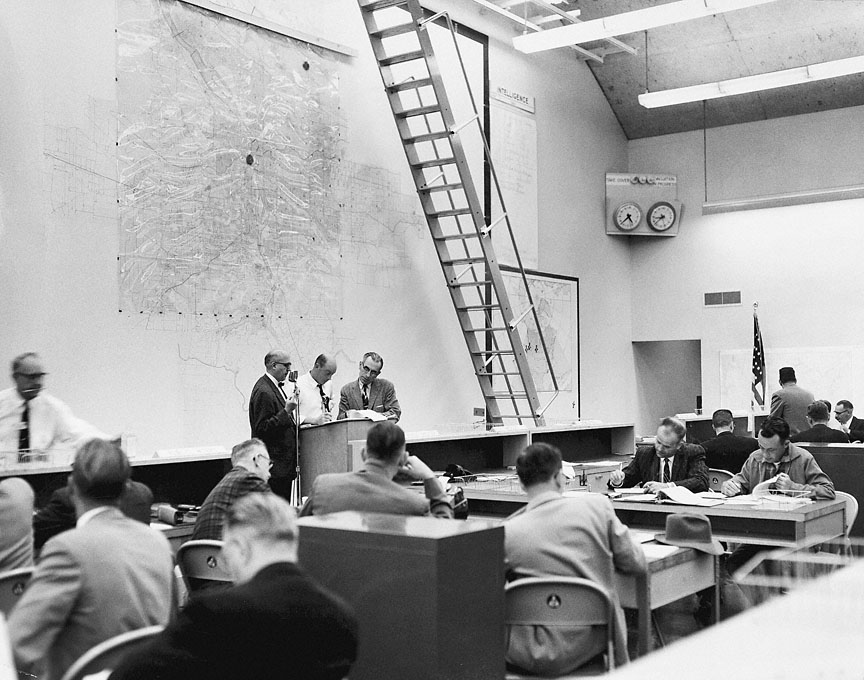- Catalog No. —
- OrHi 103178
- Date —
- 1960
- Era —
- 1950-1980 (New Economy, Civil Rights, and Environmentalism)
- Themes —
- Geography and Places, Government, Law, and Politics
- Credits —
- Oregon Historical Society
- Regions —
- Portland Metropolitan
- Author —
- Unknown
Civil Defense Underground Headquarters
In 1956, Portland became the first city in the United States to build an underground city hall, the Civil Defense Emergency Operation Center, at Kelly Butte, six and a half miles southeast of the city. It was intended to house 250 emergency coordinators for two weeks. From the underground, they could direct city and emergency services in the event of a nuclear war. It was protected from nuclear fallout by twenty-six inch walls of reinforced concrete, buried ten to thirty feet below the hillside.
Technical operations equipment cached there included a huge map of Portland, telephones, and telegraph. There was also a special radio to broadcast warnings and establish contact with all government response agencies within a thirty-mile radius without disclosing the signal’s location of origin to enemy planes. In addition, microfilm files of 100 years worth of Portland deeds and other records were stored there.
Although the main focus of civil defense was preparation for the looming Cold War threat of nuclear weapons — a contingency which never materialized — trained civil defense teams sometimes responded to natural disasters and other emergencies. Civil defense drills, a regular occurrence throughout the 1950s and 1960s, ranged from elaborate, multi-agency mock air raids to elementary school “duck and cover” drills.
Portland moved away from broad civil defense planning in the early 1960s after Senator Wayne Morse declared such efforts a hoax that lulled people into feeling falsely secure. In the early 1980s, during the Reagan years, civil defense re-emerged as an issue. The Federal Emergency Management Agency (FEMA) coordinated a controversial Crisis Relocation Plan with state and local agencies. It involved evacuating metropolitan Portland to rural areas. In addition to being poorly organized, critics said the plan would increase the likelihood of a nuclear holocaust by making people believe that a nuclear war might be fought, won, and survived.
Further Reading:
The Oregonian, September 9, 1956; October 23, 1960.
Willamette Week, November 20, 1982.
Written by © Trudy Flores, Sarah Griffith, Oregon Historical Society, 2002.
